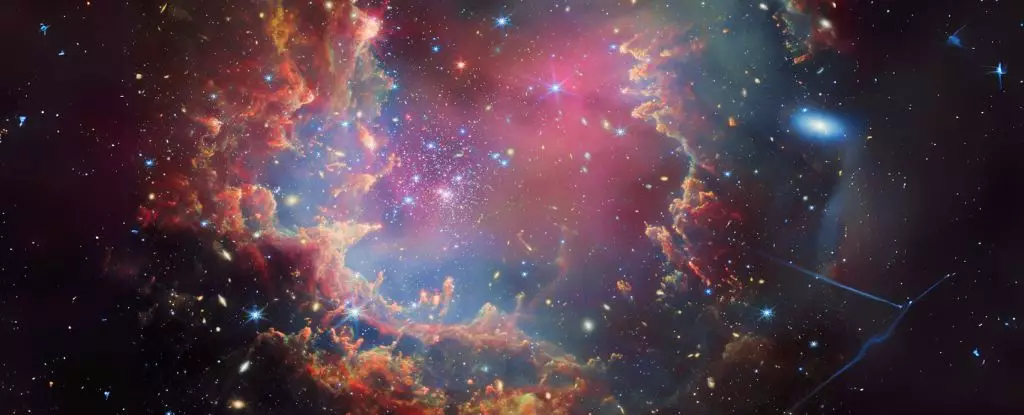In the quest to understand the origins of water in the Universe, recent breakthroughs in cosmology challenge long-held beliefs regarding the timeline of water’s formation. New simulations reveal that water, as essential as it is for life, may have existed in some forms much earlier than previously thought — potentially within the first 100 million years after the Big Bang. This article delves into the implications of these findings, the methods of the research, and the broader significance of water’s primordial presence.
The Paradigm Shift in Cosmological Understanding
For decades, scientists believed the early Universe was inhospitable to the formation of water due to the limited availability of heavier elements like oxygen, which is crucial in the synthesis of H2O. Gas clouds were thought to be primarily composed of hydrogen and helium, leaving little room for the formation of complex molecules. However, researchers led by cosmologist Daniel Whalen from Portsmouth University have conducted groundbreaking simulations that paint a different picture. Their findings suggest that conditions during the early Universe were, contrary to assumptions, conducive to the emergence of water.
Simulation Breakthroughs and Stellar Dynamics
Whalen and his team virtually replicated the events surrounding the explosions of two ancient stars, with masses of 13 and 200 times that of our Sun. By imitating the parameters known to exist shortly after the Big Bang, these simulations demonstrated that the extreme conditions of supernova explosions could efficiently produce heavier elements through nuclear fusion. The initial stellar gases, predominantly hydrogen and helium, began interacting at the incredibly high temperatures and pressures of a supernova, rapidly transforming into oxygen and paving the way for water molecules to form.
During these cataclysmic explosions, immense amounts of energy are released, allowing for the creation of new chemical compounds in the aftermath. The turbulent environment created by these supernovae helped facilitate interactions between ionized hydrogen and newly formed oxygen, leading to the synthesis of water. This crucial process may have critically altered the landscape of the early Universe, enabling the existence of “primordial galaxies” filled with water.
What complicates this narrative further is the notion that these early stars, whose existence is being closely examined now with the help of the James Webb Space Telescope (JWST), could have contributed not just to the abundance of water but also to the formation of rocky planets. The simulations suggested that within the chaotic remnants of these stellar explosions, denser regions existed where molecular hydrogen could effectively collide with oxygen to form water — an essential ingredient for life as we know it.
The researchers speculate that the freshly ejected materials from the supernovae could serve as fertile grounds for the formation of new stars enriched with heavier elements. This next generation of stellar bodies would likely possess the necessary ingredients for rocky planetesimals to develop in their protoplanetary disks. Furthermore, these newly formed stars might emerge in clusters, amplifying the likelihood of more supernova explosions, thereby creating even more opportunities for the establishment of water-rich environments.
The exciting implications stemming from Whalen’s findings suggest that water was more widely dispersed in the early Universe than merely confined to isolated pockets. While the quantity of water produced in the earliest galaxies may have been less than what we observe in the Milky Way today, with estimates suggesting it could be one-tenth of our current abundance, the very possibility of its existence raises profound questions about how life could emerge in varying environments throughout cosmic history.
The research conducted by Whalen and his team not only challenges our understanding of the Universe’s infancy but also paves the way for future exploration. As we continue to seek evidence of life beyond Earth, acknowledging water’s ancient presence could provide immense insights into the potential for life on distant exoplanets. The age-old question of where we came from—how we might not be so unique after all—becomes more complicated and fascinating, driven by the recognition that our Universe is reapportioned in ways that far exceed our current comprehension.

